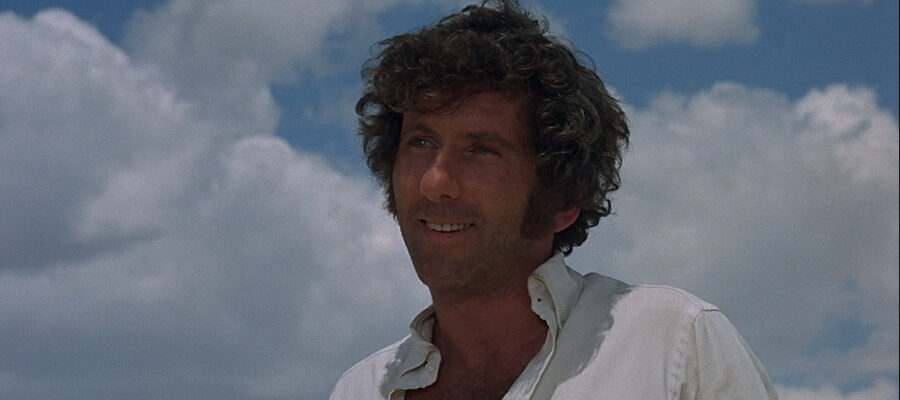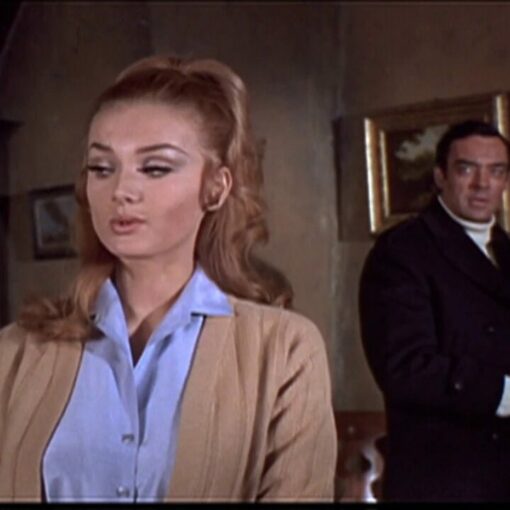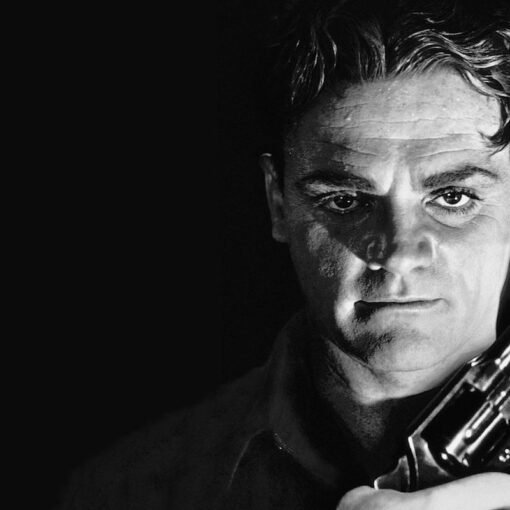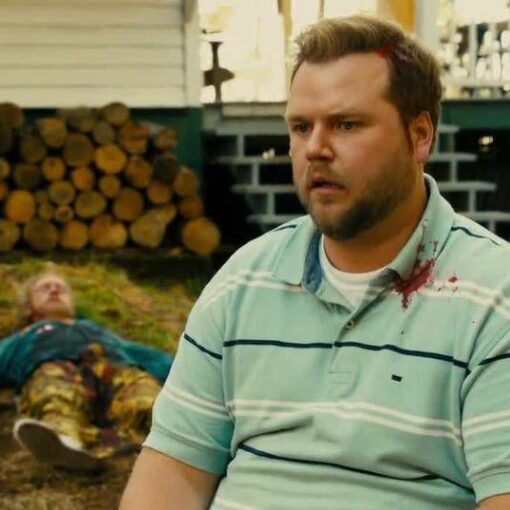Welcome to the final installment of our Road to Freedom trilogy! This time we’ll take a look at the 1971 cult classic Vanishing Point. It’s another title that I always wanted to revisit because the last time I saw it was 6-7 years ago, so the only things I recalled are the exciting car chase, the nude biker, and the shocking ending (as well as its meaning). Another thing I remembered about it is the white 1970 Dodge Challenger! That fantastic car is one of the three cars from movies that I’d love to own.The others being the Pursuit Special from Mad Max and the Lotus Esprit S1 from The Spy Who Loved Me. Anyway, I came across this film because of Quentin Tarantino’s Death Proof. I was disappointed by that film’s boring dialogue (nowhere near as good as QT’s previous flicks) but the white Dodge mesmerized me and made me want to find out more about it. Shortly after, I watched Vanishing Point. I expected it to be a straight-forward car chase film like the original Gone in 60 Seconds or Cannonball, but it turned out to be something quite different. Since I’m including it in the same category as Easy Rider and Two-Lane Blacktop for this series, those who haven’t seen it may guess that this film also has artsy elements and some symbolism as well.
Before we go straight into the plot, this is one of those films in which the story isn’t told chronologically. There are flashbacks throughout so the background of our hero, Kowalski (Barry Newman) becomes clearer as the story progresses. For the sake of character and storyline analysis, I will tell it chronologically instead.
The life of Kowalski (the man who never reveals his first name to us) begins in 1960. According to a Nevada cop who reads a report on Kowalski’s past…
“[Kowalski] Enlisted in U.S. Army 1960, service in Vietnam war. Wounded, Mai Kong delta. Honorable discharge from Army, 1964. Medal of honor for bravery in battle. Entered San Diego police force 1964. Twice promoted, detective first class 1966. Dishonorable discharge. Classified documents available to authorized personnel only. Demolition derby driver and auto clown 1967, 68. Driving license suspended 1968, previous failure to submit to alcohol level tests. Minor jobs, other driving jobs from 1970 to date. Additional data, none.”
So what does the series of flashbacks show us? Well, one day, during his time on the police force he stops a girl from being raped by another officer. Next, he falls in love with a girl named Vera. They walk around and kiss. Then she says something like:
“Wouldn’t it be funny after all this if you did have to arrest me? I mean, me trying to turn you on, and you trying to turn me in?”
And this is what she says about the scar on his chest…
“I love this. I love your scar. You hate it, I love it. […] Only if you make war on war will you overcome it. I love you. I love you.”
What do these lines tell us? It implies that she’s supposed to be a criminal that Kowalski has to arrest. She also teaches him about love and peace. She decides to say goodbye, goes surfing, and probably drowns. It’s a tragedy that leaves him sad and might’ve caused him to get fired from the police department. Isn’t it sad when someone learns the meaning of love only when they’ve lost everything?
After participating in auto racing for a few years, Kowalski becomes a car delivery driver in which he has to drive across various states. One day, after finishing his job driving a car to Denver, Colorado he immediately gets into the white Dodge Challenger. Next, he meets a drug dealer friend, buys some speed to get gone and makes a bet that he can deliver the car to San Francisco within 15 hours (2 days faster than the schedule). This is a challenging task. According to my research, the distance is 1200 miles (about 1931 kilometers) and he has to drive at least 80 miles an hour (128 km/hr) to reach the destination within limited time. Therefore, Kowalski drives fast on the highway instantly. This gets attention from the local cops since he drives faster than the speed limit, but none of them can stop him. There’s a black DJ named Super Soul (Cleavon Little) who listens to the police radio and keeps telling listeners what’s going on as well as supporting our hero.
This sounds like some sort of a prototype for Smokey & The Bandit right? However, there’s no runaway bride, no crazy sheriff with a dumb son, or group of truckers to help our hero. Plus, the second half of Vanishing Point turns the car chase into something more abstract.
After escaping through the desert, Kowalski meets an old guy (Dean Jagger) who catches snakes in exchange for drinks and food from a group of Christian activists who host a small concert. Sadly, Rev. J. Hovah, the leader of Christians, doesn’t want it anymore because they already have bands to play. Then, he opens the basket of snakes, throws them out, and refuses to give the poor old man any food! Since this guy’s name clearly references Jehovah (I have no knowledge of religion) I’m going to leave it here for you to analyze whether this scene symbolizes anything or not.
While these situations are going on, we learn that Super Soul somehow has a psychic power to hear, feel, and understand what Kowalski thinks or says, so he tries to help Kowalski by telling him useful information….
“Well, big brother is not so much watching as listening in, as you well might have gathered by now. But what you probably don’t know is that, uh, they found these 2, let us say, gentlemen, on the road. They was pretty badly battered up. Yeah. They musta had an accident orsomething like that. But some smartass was putting the pressure on them to charge you with some ugly nasty crime, let us say, assault and battery. But the 2 gents in question refused to comply. Or as my alter ego might put it, stickin’ to they guns. Now, listen to this. Some party or parties are busily preparing a little welcome committee in the sunshine state. And the main doors, and even some side doors, are heavily embellished with goblins and fuzzy frills. You know what I mean?”
FYI, the two “gentlemen” he references are gay criminals who pretended to be hitchhikers then tried to hijack Kowalski’s car, but their plan fails miserably. Shortly after Super Soul finishes the sentence, a group of rednecks attack the station and injure both Super Soul and his crew. Then, the cops try to lure Kowalski into a trap by using a fake DJ. Luckily, Kowalski and his friend Angel know this, so they come up with a plan to use an air siren and pretend our hero’s car is the police. A smart plan. Before all of that happens, we see the legendary nude biker, Angel’s girlfriend. She comes up to Kowalski, shows him a scrapbook that has the story of his police career, and says a cryptic line…
“You know you haven’t changed much. […] I know [that it was a long time ago]. I pasted it up when it first came out. When I cut it out, I…”
Then she rides away! So what is that all about? I guess it references her past when she had a crush on him, but now she has a boyfriend…so she can’t reveal that kind of past easily to anyone. For Kowalski, at least it’s good to know that someone cared about him, even in the past.
Now we are back at the first scene of the movie, in which crowds are gathered and bulldozers are set up as a roadblock. The media are ready to report the story (although they misunderstand that Vera is Kowalski’s girlfriend). We see Super Soul try to warn Kowalski, but it’s useless. Kowalski smiles as he sees the bulldozers and crashes right into them! So why does he decide to kill himself? What does he has to prove? For me, the reason is that he’s free and there’s nothing that can stop him. For a guy who lost his love and went through many bad things in his life, right now it’s better for him to die free than live in a cage, literally or psychologically. Kim Carnes’ Nobody Knows is a great song to be played during the end credits.
The remake (a made for TV movie from 1997) tries to give an explanation for this kind of ending. I think it’s better to leave it vague and let the audience interpret it the way they want.
Vanishing Point is a unique film for me. It has a fantastic car chase as well as deliberate but unclear plot points, so this can be played to both mainstream and arthouse film fans. Highly recommended.
—————————————–
CONCLUSION: After writing this trilogy, I learned that there’s no way major studios will release or make films like these again. It’s because the late 60’s-70’s was the day and age of confused teenagers who wanted to find meaning in their lives and, therefore, films like these tried to send them messages. We think roaming the open roads shows us how free we can be, but free from what exactly? This is the eternal question that has a different answer for each of us.







